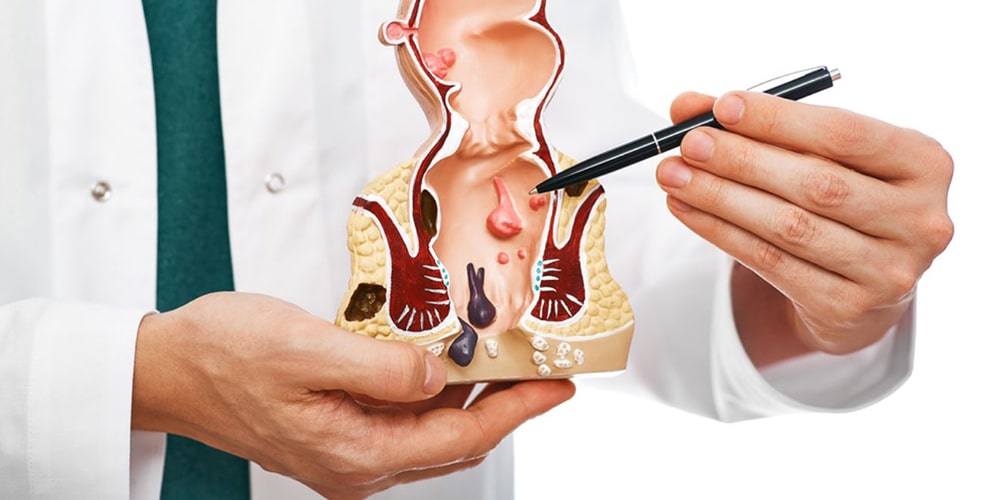
What is Anal Fissure Surgery?
Anal Fissure Surgery is a medical procedure often recommended to address severe pain stemming from a tear in the lining of the lower rectum. A tear, or fissure, in this area of the body can cause extreme pain, especially during bowel movements. Though some anal fissures can heal on their own accords or with the assistance of over-the-counter remedies such as stool softeners and topical analgesics, others can cause pain for weeks and ultimately require surgical intervention.
Who is at risk for an anal fissure?
Anal fissures are common during infancy. Older adults are also prone to anal fissures due to decreased blood flow in the anorectal area. During and after childbirth, women are at risk for anal fissures due to straining during delivery.
People with IBD also have a higher risk for developing anal fissures. The inflammation that occurs in the intestinal lining makes the tissue around the anus more prone to tearing.
People who frequently experience constipation are at an increased risk for anal fissures as well. Straining and passing large, hard stools are the most common causes of anal fissures.
What causes an anal fissure?
Anal fissures can be caused by trauma to the anus and anal canal. The trauma can be caused by one or more of the following:
- Chronic (long-term) constipation
- Straining to have a bowel movement, especially if the stool is large, hard and/or dry
- Prolonged diarrhea
- Anal sex, anal stretching
- Insertion of foreign objects into the anus
Causes other than trauma include:
- Longstanding poor bowel habits
- Overly tight or spastic anal sphincter muscles (muscles that control the closing of the anus)
- Scarring in the anorectal area
- An underlying medical problem, such as Crohn’s disease and ulcerative colitis (types of inflammatory bowel disease); anal cancer; leukemia; infectious diseases (such as tuberculosis); and sexually transmitted diseases (such as syphilis, gonorrhea, Chlamydia, chancroid, HIV)
- Decreased blood flow to the anorectal area
- Anal fissures are also common in young infants and in women after childbirth.
What are the signs and symptoms of an anal fissure?
Signs and symptoms of an anal fissure include:
- Pain during, and even hours after, a bowel movement
- Constipation
- Blood on the outside surface of the stool
- Blood on toilet tissue or wipes
- A visible crack or tear in the anus or anal canal
- Burning and itching that may be painful
- Discomfort when urinating, frequent urination, or inability to urinate
- Foul-smelling discharge
How is an anal fissure diagnosed?
A doctor can usually diagnose an anal fissure simply by examining the area around the anus. However, they may want to perform a rectal exam to confirm the diagnosis.
During this exam, the doctor may insert an anoscope into your rectum to make it easier to see the tear. This medical instrument is a thin tube that allows doctors to inspect the anal canal.
Using an anoscope may also help your doctor find other causes of anal or rectal pain such as hemorrhoids. In some cases of rectal pain, you may need an endoscopy for better evaluation of your symptoms.
How Is Anal Fissure Treated?
The goal of anal fissure treatment is to lower the pressure on the anal canal by making stools soft, and to ease discomfort and bleeding. Conservative treatments are tried first and include one or more of the following:
- Preventing constipation through the use of stool softeners, drinking more fluids while avoiding caffeine-containing products (which cause dehydration), and dietary adjustments (increase in intake of high fiber foods and fiber supplements);
- Soaking in a warm bath (also called a sitz bath), 10 to 20 minutes several times a day, to help relax the anal muscles;
- Cleansing the anorectal area more gently;
- Avoiding straining or prolonged sitting on the toilet;
- Using petroleum jelly to help lubricate the anorectal area.
These practices heal most fissures (80 to 90 percent) within several weeks to several months. However, when treatments fail and anal fissures persist or come back, other measures can be tried, including:
- Using hydrocortisone-containing suppositories, foams, or creams to reduce inflammation;
- Applying other creams and ointments. These may include a medicated cream (to help heal the fissure), a topical muscle relaxant (to relax the anal muscles), an anesthetic ointment (to reduce pain, if pain interferes with having a bowel movement), or nitroglycerin or calcium channel blocker ointments (to relax the anal muscles and increase blood flow to the region, promoting healing).
- Injecting botulinum toxin type A (Botox) into the anal sphincter. The injection temporarily paralyzes the anal sphincter muscle, relieving pain and promoting healing.
What does surgery for an anal fissure involve?
Before surgery is considered, your doctor will re-examine you and may conduct other tests to determine why other treatments have failed to heal the fissure.
A fissure may fail to heal because of scarring or muscle spasms of the internal anal sphincter muscle. Surgery usually consists of making a cut to a small portion of the internal anal sphincter muscle to reduce pain and spasms and allow the fissure to heal. Cutting the muscle rarely results in the loss of ability to control bowel movements.
The surgery can usually be performed on an outpatient basis (the patient goes home the same day). Pain is relieved after a few days and complete healing takes place in a few weeks.
Make an appointment
Our Doctors
-
Dr. Sujoy Kr. Bhattacharjee
Joint Replacement -
Dr. (Maj.) Mukesh Garg
Orthopaedics & Arthroscopy -
Dr. Kamal Verma
Neuro Sciences


